| |
INSIDE YOUR WATER HEATER
CLOSET |
|
| |
|
|
| |
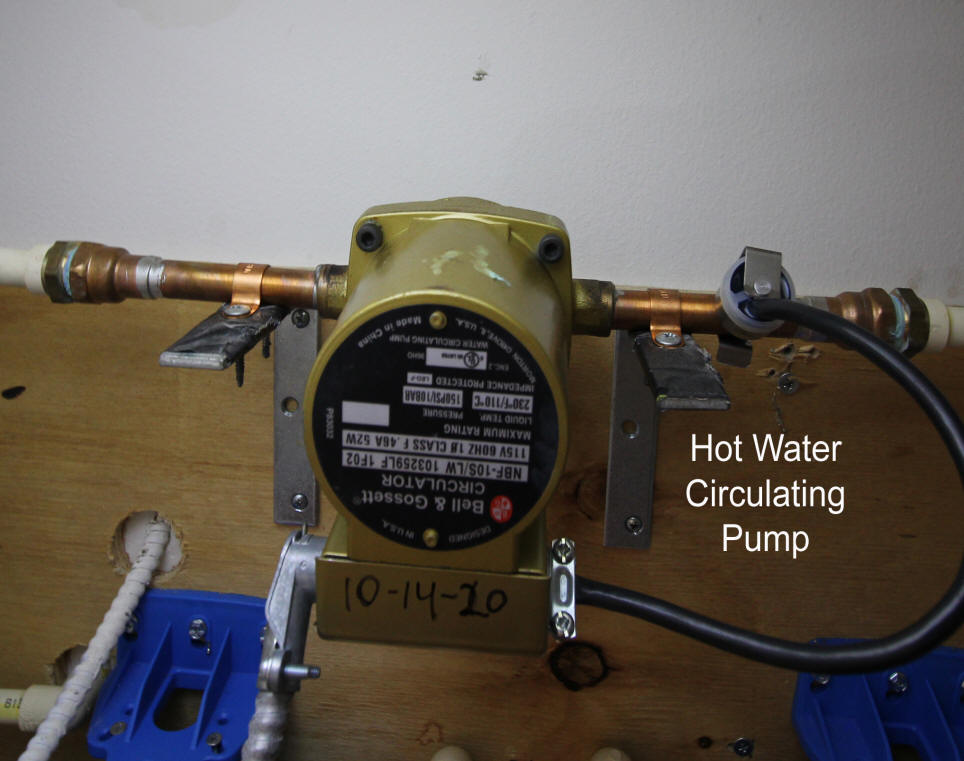 The
Hot water circulating pump keeps a The
Hot water circulating pump keeps a
constant supply of hot water circulating around in a plumbing loop so
that hot water is available almost immediately at any faucet.
It is important that this be TURNED OFF at the switch in the closet when
the water is turned off. It is also good to turn off the circuit
breaker that controls it.
You MUST turn off the water heater circuit breaker when water is turned
off to avoid damaging your water heater.
Allowing this pump to run when no water can circulate WILL destroy it,
and you will need to replace it at a cost exceeding $500 |
|
| |
|
|
| |
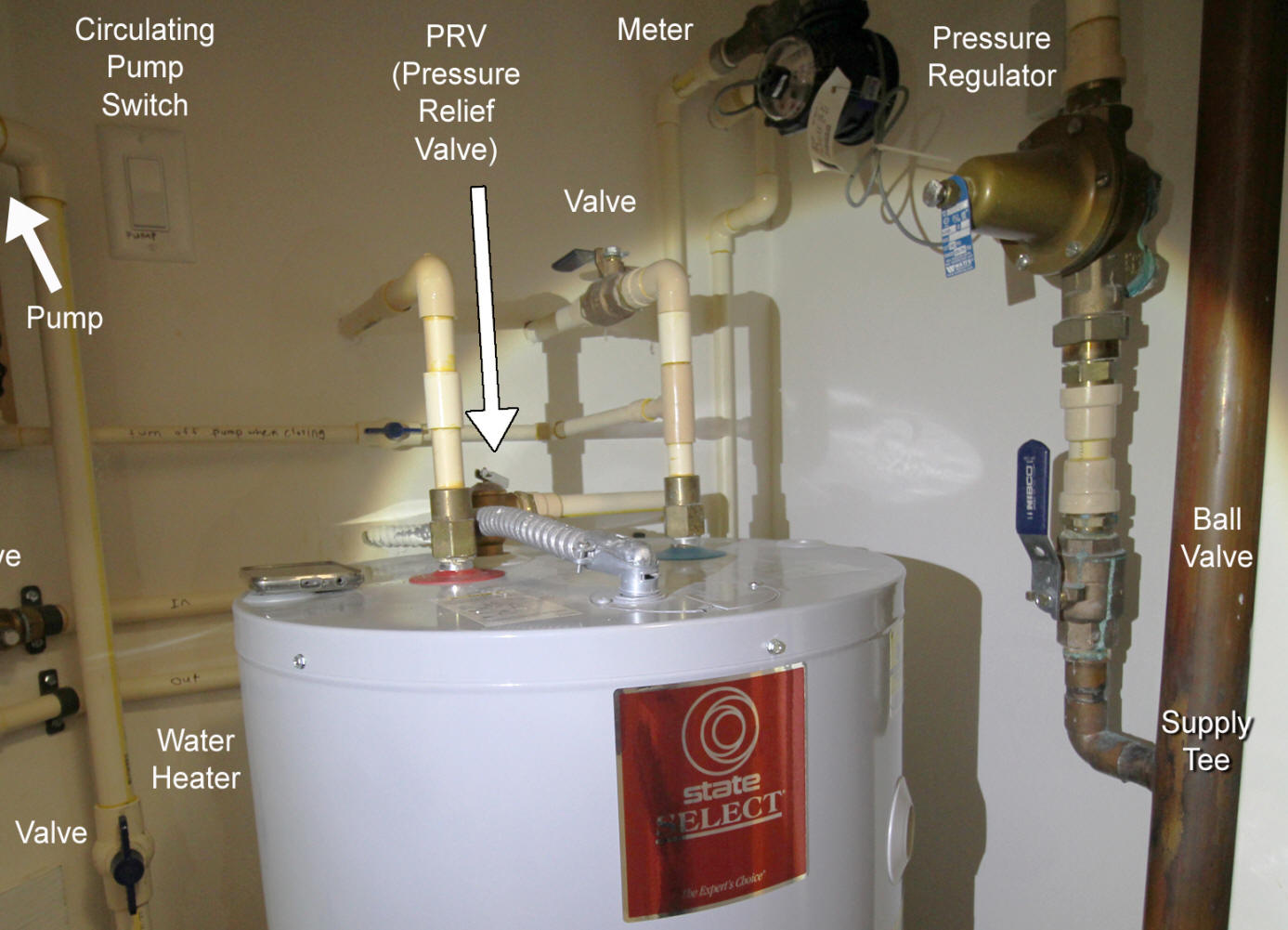 |
|
| |
|
|
| |
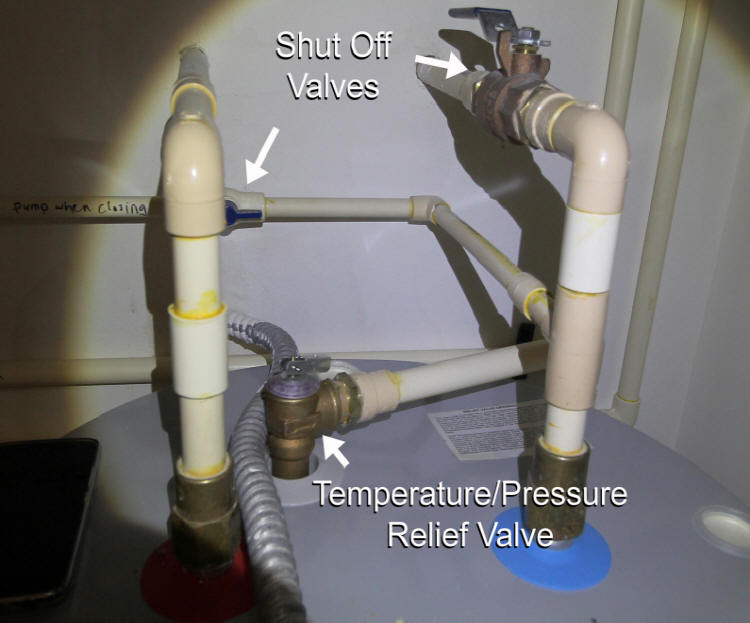
The PRV (also known as a Temperature/Pressure Relief Valve allows water
to escape when the internal temperature or pressure in the water heater
is too high. This prevents the tank from bursting.
The PRV is a critical safety device required by code. Be certain
that it is present and is in good condition.
Also check the drip leg as shown below. |
|
| |
|
|
| |
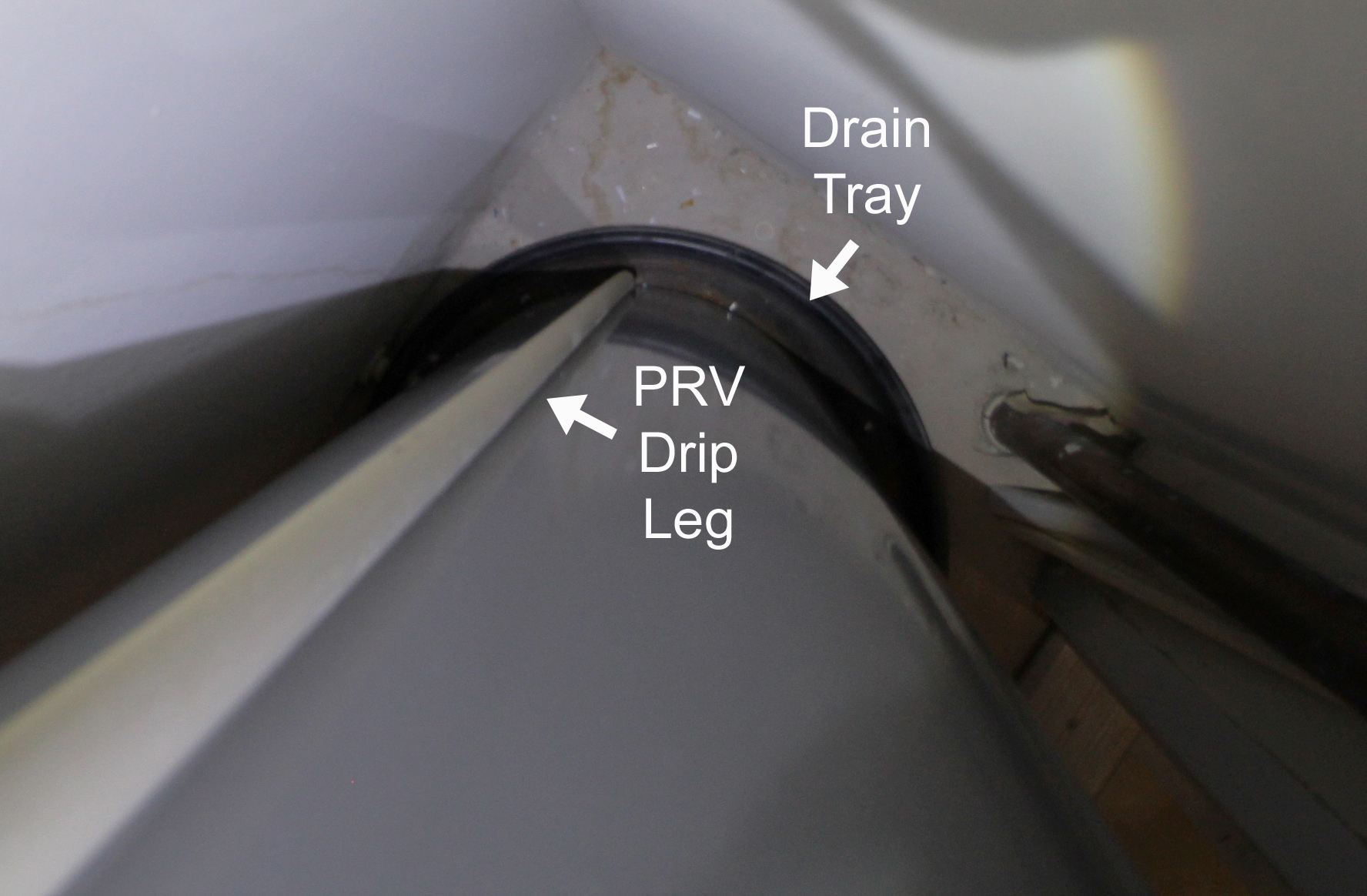
The drip leg, or discharge pipe, directs hot water toward the floor so
that it does not injure someone or spray hot water around the room.
Make sure it runs into the drain pan and is not obstructed. |
|
| |
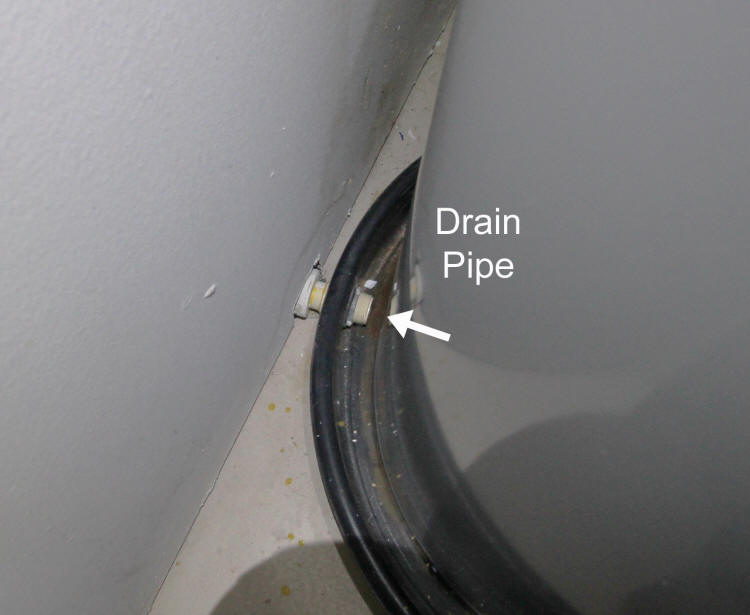
This pipe runs out of the drain pan into a central drain system that
prevents flooding of your unit and units below yours if the water heater
begins to leak.
Check to make sure it is not obstructed. |
|
| |

There are many types of fittings that connect the various sections of
metal and plastic pipes in your water heater closet. Check each of
these for corrosion and leaks.
You will probably notice a metering device in the closet as well.
This measures how much water you use each month.
|
|
| |
|
|
| |
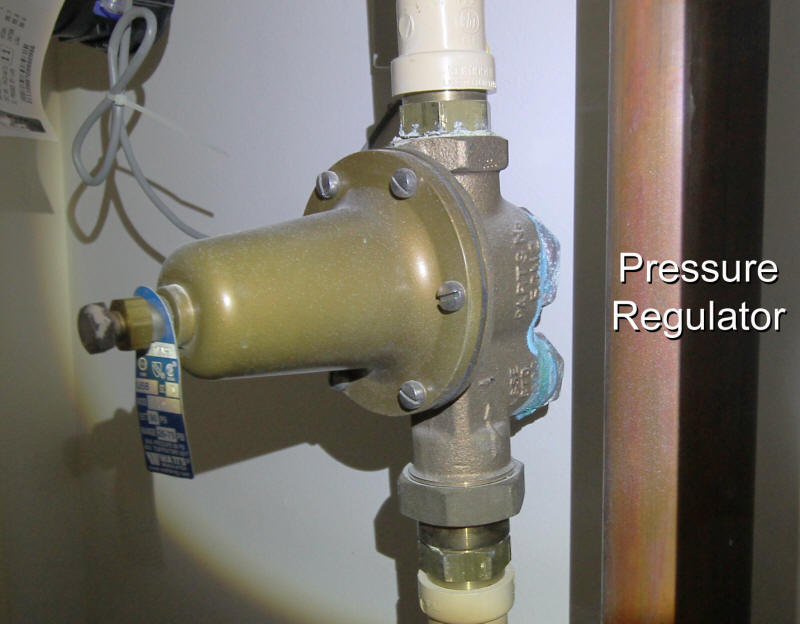 This
is a pressure regulator. It literally determines (limits) how much
water pressure is available in your household. This
is a pressure regulator. It literally determines (limits) how much
water pressure is available in your household.
Keep in mind that if you live on a lower floor, the central plumbing
system must have enough pressure to lift water up to the 12th floor
while still maintaining adequate enough pressure at the faucets there.
For that reason, if there was no pressure regulator to reduce or limit
the pressure in your home, your water pressure would be much too high,
and might damage your plumbing or cause a severe leak.
DO NOT TAMPER WITH THIS REGULATOR ! !
If you believe there is a water pressure problem, you should first check
and clean all your aerators and the strainers in your washing machine
hoses. Apparent low water pressure is usually a symptom of
sediments accumulating in an aerator or strainer. (Especially when
it seems to impact one faucet but not another.) |
|
|
|
|
| |
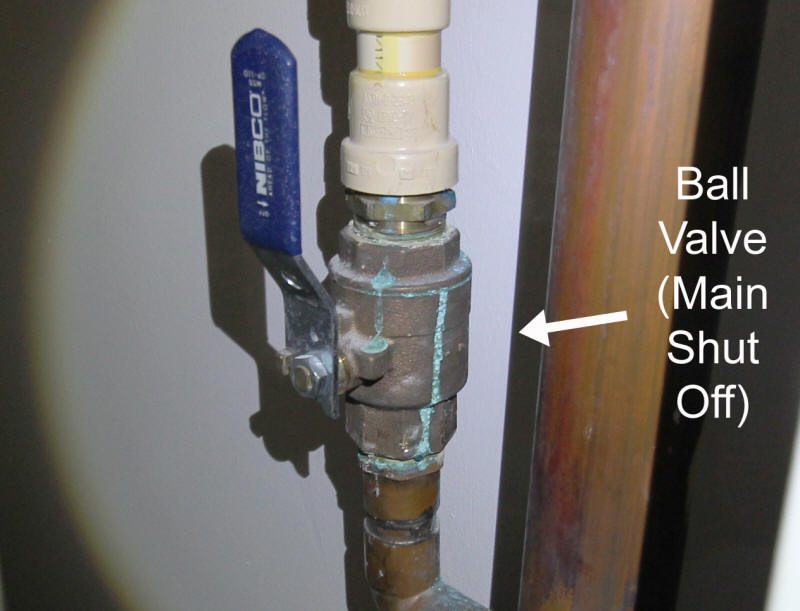
Every member of your household should know where the water shut off
valve is, in case it becomes necessary to shut off the water due to a
leak.
You should also turn off the water every time you leave the condo
unattended for more than a day or two.
The valve is open, or turned on, when the handle is lined up with the
pipe. It is closed, or turned off, when the handle is turned at a
right angle to the pipe.
Look for corrosion here as well as at the joint or tee in the water main
shown below.
|
|
| |
|
|
| |
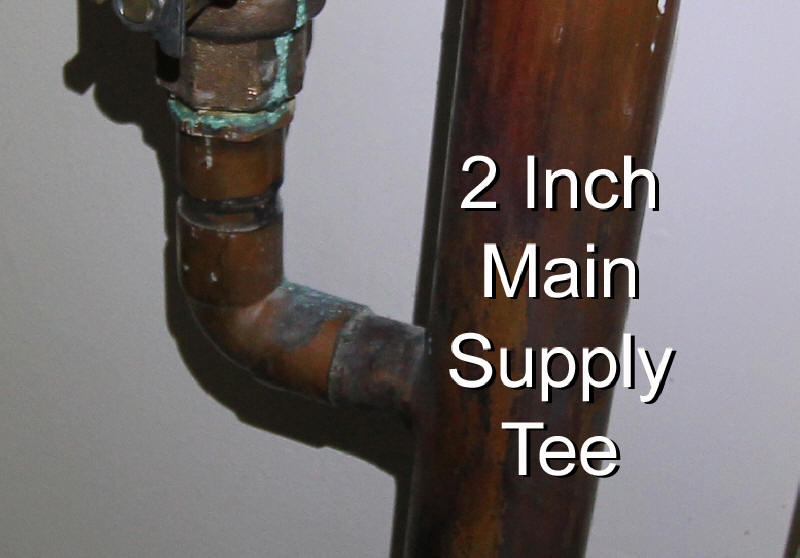
The water main in each condo stack is two inches in diameter, and is
under enough pressure to lift water to the penthouse level while still
providing adequate pressure at that level.
If this water main were to burst at any level, it would quickly flood
every condo below it. This is why it is important that we check it
periodically for signs of failure. |
|
| |
|
|
| |

There may be several types and different sizes of
water shut off valves in your water heater closet.
You should become familiar with the function of each and the reason for
its presence.
For example, if you have a filtration system, there will be valves that
you open and others that you close to make water bypass the filter
system and to isolate that system when it is necessary to service it.
Again, these valves are typically open when the handle is in line with
the pipe and closed when the handle is perpendicular to the pipe. |
|
| |
|
|
| |
Every water heater should
have a tag that provides details about capacity a nd
wattage of the heating elements. nd
wattage of the heating elements.
This label should also provide the date of manufacture, so you can tell
the age of your water heater. This will usually be coded into the
serial number of the water heater, but may also be displayed as a date
on the tag.
In the case of this State Industries water heater, the first two digits
of the serial number represent the year, and the next two digits
represent the week.
This water heater was made the first week of 2013.
What's the life expectancy for your water heater?
Various sources give figures like 8 to 12 years and 10 to 15 years.
It would not be unreasonable to plan on replacing your water heater
every ten to twelve years. |
|
| |
|
|
| |
|
|
| |
|
|
| |
|
|
| |
|
|
| |
|
|

